This is it. The first three episodes of Robin y el Murcielago, the deranged bootleg Spanish Batman comic from the 1940s, have all been mere prelude to this one. This is the one that we all fell in love with all those years ago, the one that first got me thinking that someone ought to do a translation. Yes, this is the one…
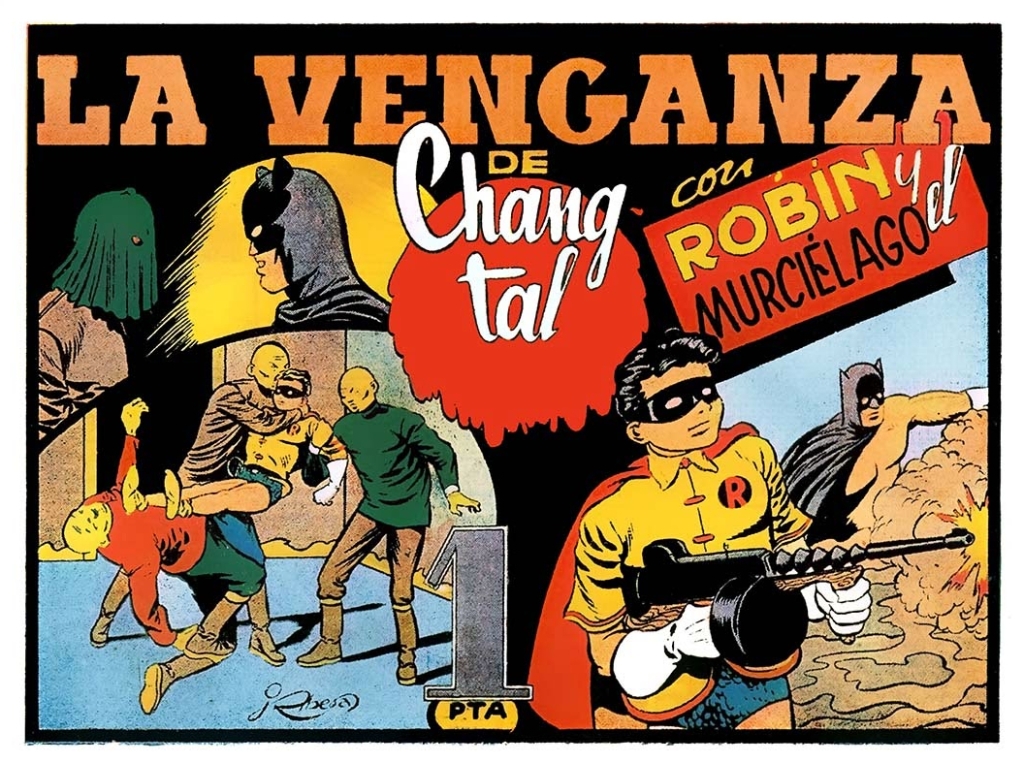
…where Robin has a tommy gun. At this point, a kind of transformation has been completed. In the first few pages of the first issue, we were reading about the crimefighters Batman and Robin, imported and pirated directly from the newspaper strip. Slowly, the characters have morphed into the violent and foul-mouthed vigilantes Robin y El Murcielago. Spanish-language blog De Domínio Público argues that, by this point, the characters are more reminiscent of long-running Spanish comics duo Roberto Alcázar y Pedrín. Robin in particular is reminiscent of Pedrín, the youthful sidekick of Alcázar, as both are ill-tempered and especially violent.
A minor note of interest: the best-quality scan I could find of this issue was actually in Portuguese. However, the Portuguese doesn’t look hand-lettered, but rather as if a font was used, much as I’m doing on my English translations. I’m not sure if someone did a scanlation or an actual full printed translation.

And man, this issue doesn’t waste any time giving you exactly what you want. What weighs six ounces, sits in a tree, and is very dangerous? A sparrow with a machine gun, but a Robin is pretty dangerous too.
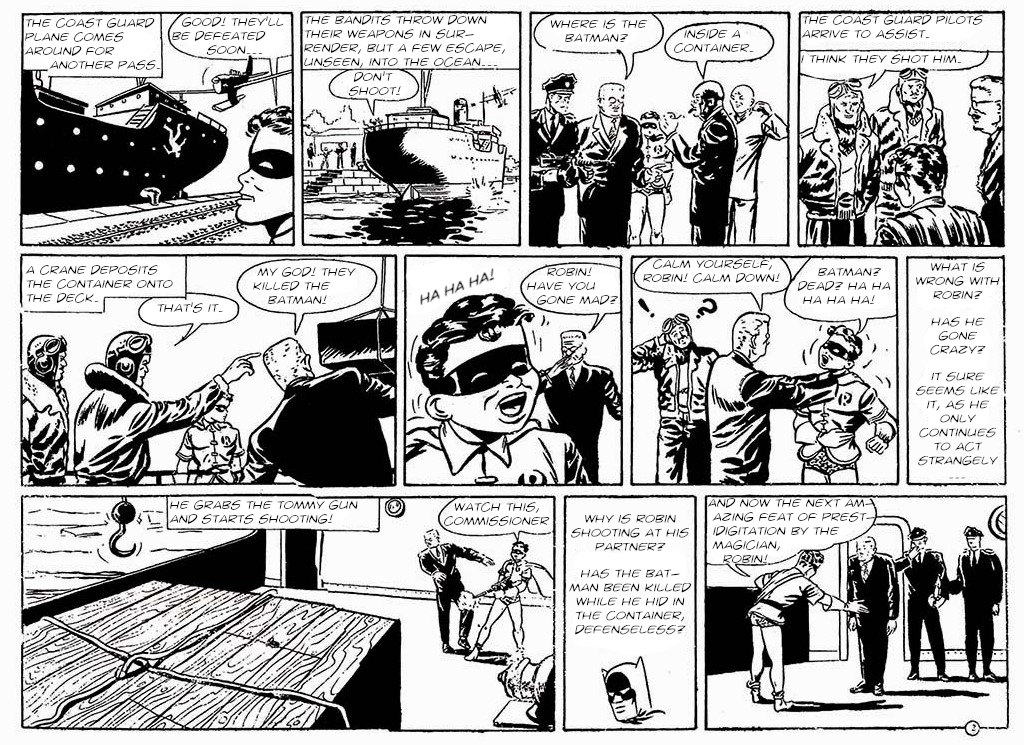
Robin really enjoys shooting that tommy gun. Almost as much as he enjoys making fun of his friends for being such stupid buffoons as to believe that anyone could kill Batman.
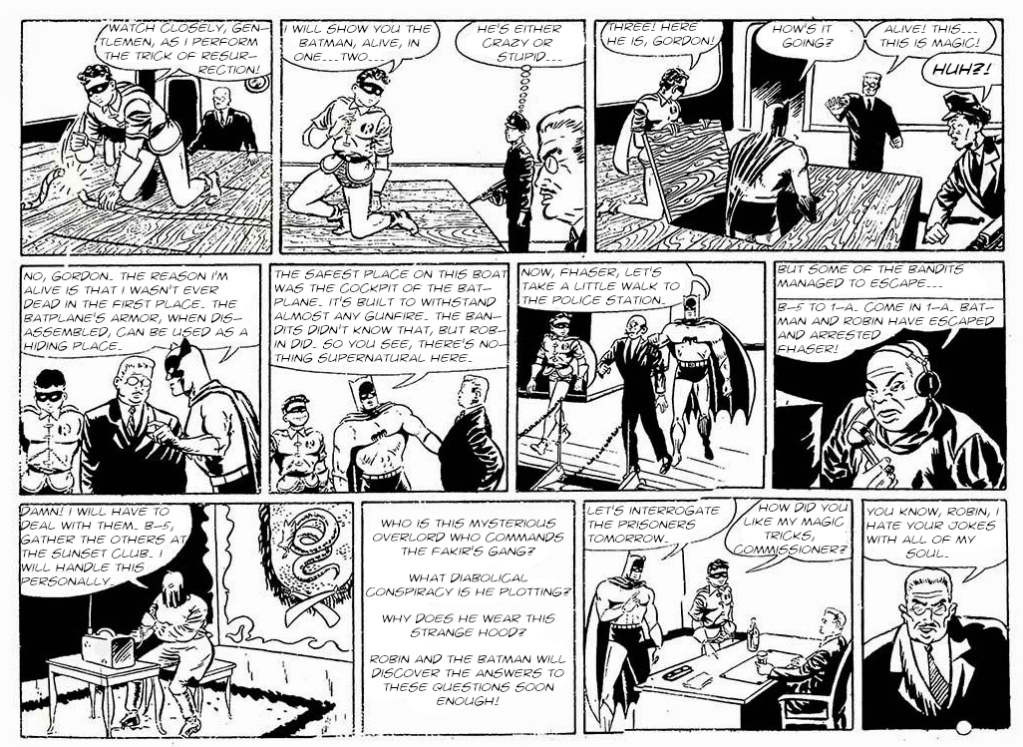
That last panel is probably Gordon’s best line of dialogue in any story in any medium.
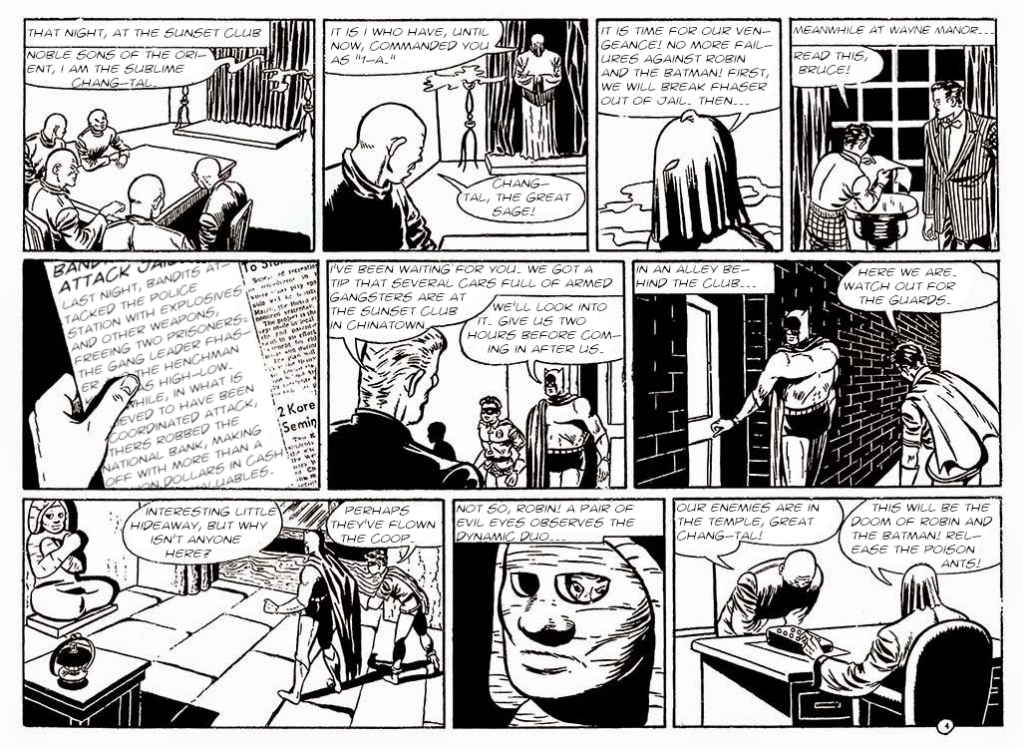
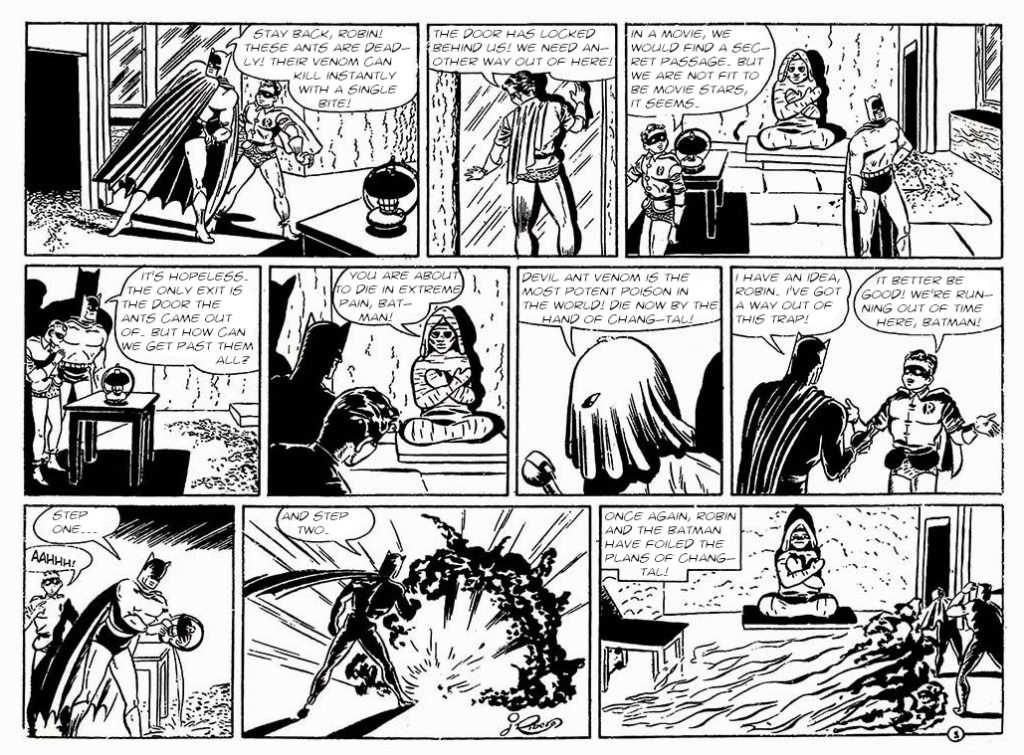
Something that’s definitely been lost in modern cape comics is the art of the deathtrap. In the Golden Age, when basically every story was just about getting the hero into and out of a new deathtrap, you had to stay inventive and original. Nowadays, writers rarely even use the deathtrap as a plot device, and when they do, it’s always the same two or three ideas: a character chained up over a vat of acid/fire/poison/whatever, a character buried alive, you know the ones. When was the last time a writer busted out something special like poisonous ants that can kill with a single bite?
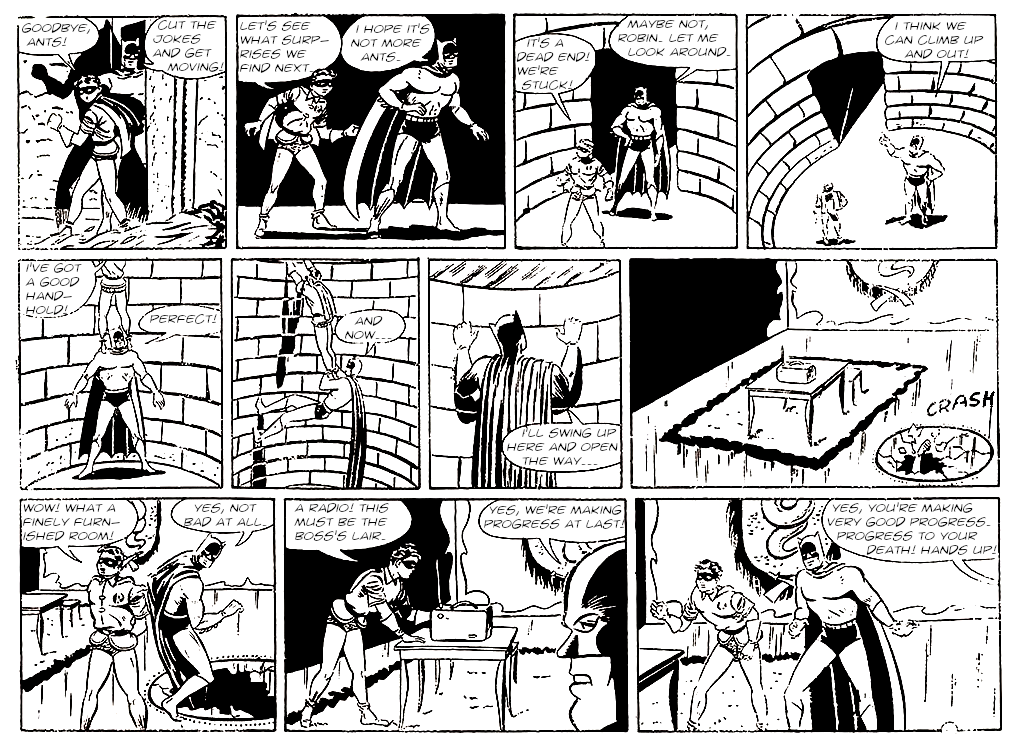
I’d love to be a fly on the wall in the meetings between Chang-Tal and his contractor when they were building this particular part of the Sunset Club.
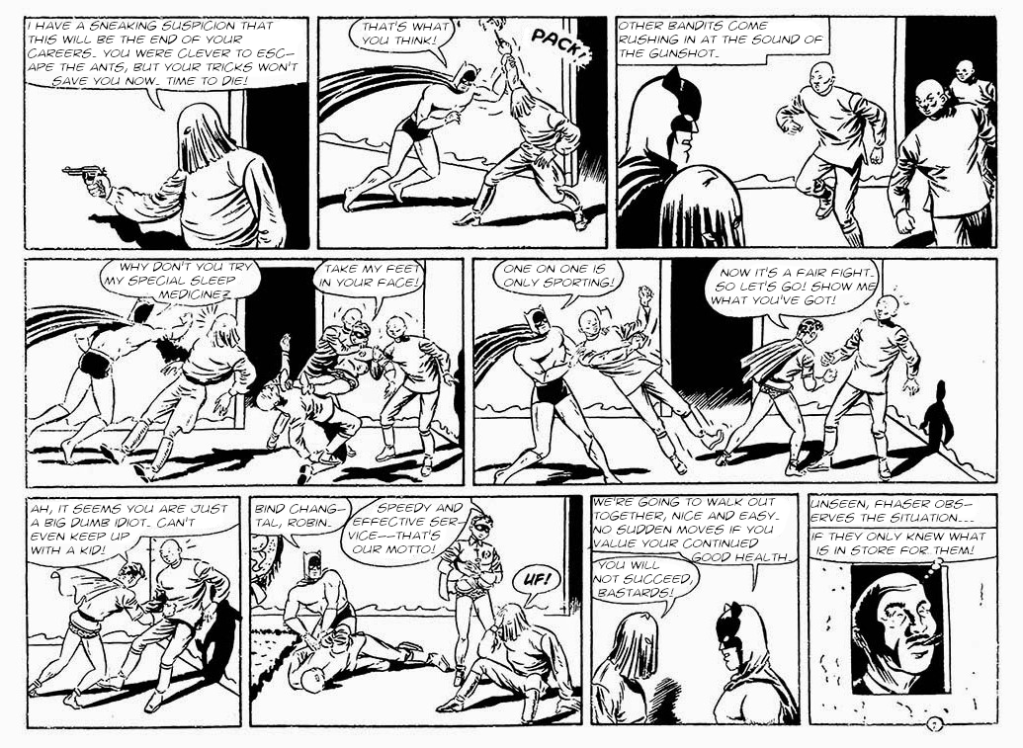
One of the interesting unexpected things I’ve encountered during this translation process is getting a look into Spanish onomatopoeias. Many are basically identical to those we use in American English: ahem/ejem, for instance, or ha-ha/ja-ja. Others are very similar, such as crash/cras or oof/uf. Uf is also sometimes used the way we might use ugh, as in the second panel of the third row here.
But then you have panel two of the first row, in which a small handgun going off makes a “PACK!” sound. And honestly, I think they’re right. That is closer to what a small handgun sounds like than “BANG!” It’s just that we already have a word spelled “pack” and it doesn’t have much in common with this usage. In most cases during this project, I’ve slightly altered onomatopoeias, with the exception of “uf” because I think it works fine and isn’t distracting the way “cras” would be. But “PACK!” would have required a lot more fine linework than I’m comfortable attempting in GIMP. I’m not an artist or a letterer. So “PACK!” stays.

I love this bloodthirsty Robin every bit as much as I expected to. “Say hello to your ancestors!”
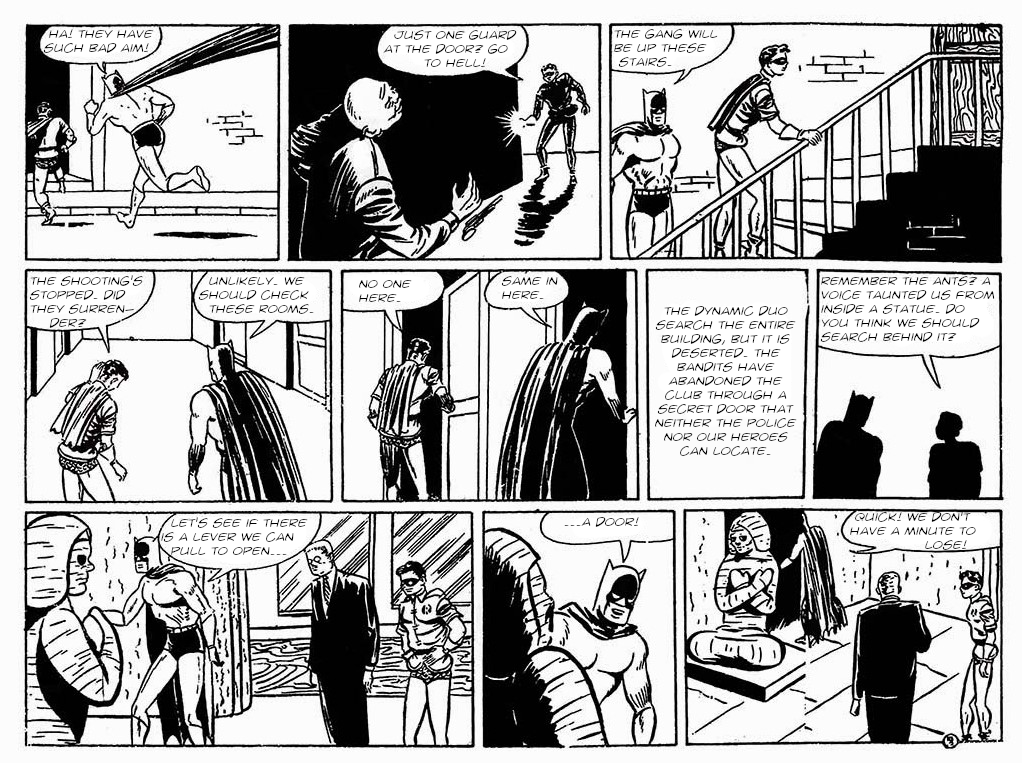
Robin just continues to mow dudes down. Kid’s gonna end up with a body count worthy of the Punisher by the time this series is finished.
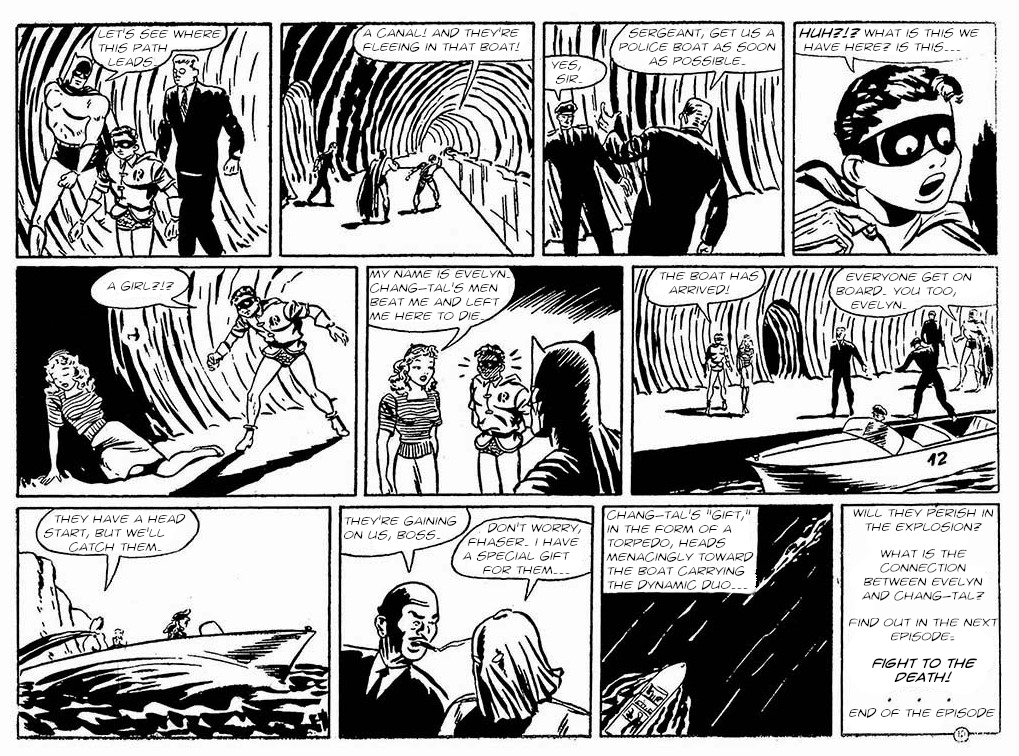
Incredibly, Ribera restrains himself from giving Robin a huge boner, but we are definitely meant to infer that he’s just popped one in the second panel of the second row. It’s pretty gross, to modern eyes, to get immediately horned up over a woman who’s just been beaten up and left for dead, but this was the 1940s. That was the same decade that made a photograph of sexual assault into a romantic icon. (Seriously. She punched him in the face while he was still kissing her.)
Anyway, that’s it for the most famous episode of Robin y El Murcielago. Happy-horny-bloodthirsty Robin in the full flowering of his glory. Up next, in #5, we start to see Ribera really begin to develop into the towering figure he would become in European comic art. See you next time!
Do you have material from an unpublished comic? Have you heard of an unpublished comic you think I should cover? Did I get something wrong in this post? Please reach out and let me know with an email to neverwerecomics (at) gmail.com, or on Twitter @neverwerecomics. Thanks for reading!
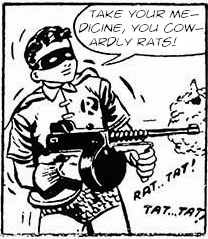
2 thoughts on “A Robin With A Machine Gun: Robin y El Murcielago #4 translated”